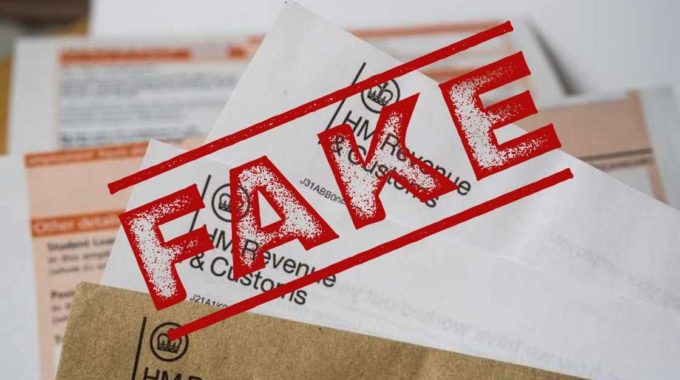
Fake HMRC letters are getting more and more common. Did you know there were a staggering 915,762 reports of HMRC scams in 2020? It’s a frightening statistic and one we suspect will be even higher in 2021.
So, what steps can you take to avoid being a victim of an HMRC letter scam?
Further to our post about how to avoid online scams, it is just as important to be vigilant about letters received in the post, such as from HMRC.
Scammers will take every opportunity to send fake letters to unsuspecting individuals and are very good at selecting the most opportune time to go after their prey. Fake HMRC letters tend to do the rounds at times such as immediately following the self-assessment deadline. Letters at this time get sent demanding urgent payments and for those business owners who are already busy and stressed and who may have genuinely missed the deadline, the danger of falling foul of one of these scams is heightened.
How to spot a fake HMRC letter
If you receive a letter from HMRC, the first thing to do is check the small, but significant details that can so easily be overlooked. Check the following, both to check they are correct and to look for spelling and grammatical errors – a sure giveaway of a scam letter.
- The address
- Postcode
- Contact details such as telephone number
All relevant contact details can be checked on the GOV.UK website
- Logo – is it distorted or of poor quality
Beware demands for immediate action
As mentioned above, one red flag is poor grammatical English, and another is an urgent demand for action. One of the most common examples of a fake letter from HMRC is a demand for payment. If the first time you receive a letter from HMRC it asks you for immediate payment, alarm bells should start to ring.
HMRC are not going to demand immediate payment in their first letter to you, even if you do owe them money. A genuine letter from HMRC will ask you to get in contact to discuss any late payment in the first instance.
There are certain types of letters that get sent from HMRC and you can check which these are on the GOV.UK website. The site details a list of recent letters sent from HMRC to help you decide if a letter you’ve received is a scam or not.
Beware of anything relating to bank details
Another example of a fake HMRC letter is where the letter issued advises customers of a change to HMRC’s bank details. They request the respondent update the bank details and of course, your hard-earned money goes directly to the scammer’s bank account, and you still owe the money to HMRC.
Bank details for relevant payments can be checked on the GOV.UK website such as:
- HMRC bank details for paying your Self Assessment tax bill
- HMRC bank details for paying your Corporation tax
- HMRC Bank details for paying your VAT bill
What to do if you believe you have received a fake letter
Contact HMRC directly, send them a copy of the letter and request they verify its authenticity. This is useful if the letter is a scam as HMRC will have a record to refer to and flag up to others if necessary. When contacting HMRC to discuss any letter you have received, make sure you get the contact information directly from their website, NOT from any contact details on the letter for obvious reasons.
If you are a client of Maynard Johns, send us a copy of the letter and we will check it out for you. If you use another accountant, get in contact with them and ask if they will check the letter out for you.
It is also advisable to contact Action Fraud if you think you have received a fake HMRC letter. The more people that report this type of fraud the better so that efforts can be taken to try and uncover the fraudster and stop them in their tracks.
